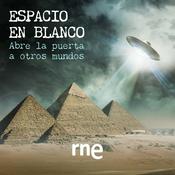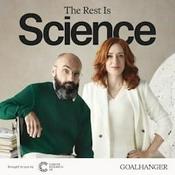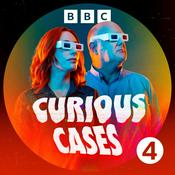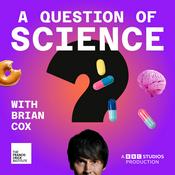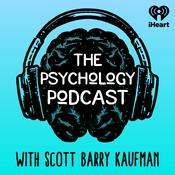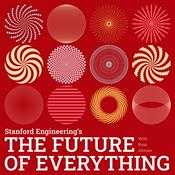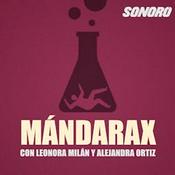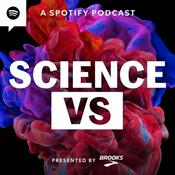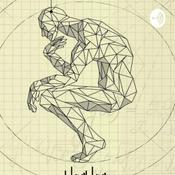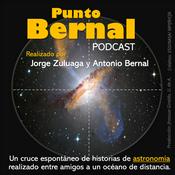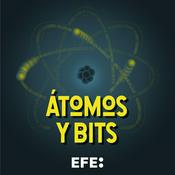Normal Curves: Sexy Science, Serious Statistics
Regina Nuzzo and Kristin Sainani
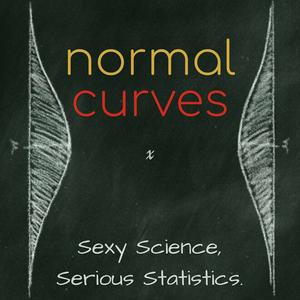
Último episodio
Episodios disponibles
5 de 23
- Holiday Survival Guide Part 2: The survey study editionDoes the temperature of your coffee six months ago really predict whether you feel gassy today? This week we dissect a new nutrition survey study on hot and cold beverage habits that claims to connect drink temperature with gut symptoms, anxiety, and more—despite relying on year-old memories and a blizzard of statistical tests. It’s the perfect case study for our Holiday Survival Guide Part 2, where we teach you how to talk with Uncle Joe at the dinner table about one of the most common—and most fraught—study designs in science: cross-sectional surveys. We walk through our easy checklist for making sense of results, show how recall bias and measurement error can skew the story, and reacquaint you with nonmonogamous Multiple-Testing Dude, who’s been very busy in this dataset. A friendly, practical guide to spotting when researchers are just torturing the data until it confesses.Statistical topicsConfoundingCross-sectional studiesFalse positivesMeasurement errorMultiple testingPICOT / PIVOT frameworkRecall biasResearch hypothesesSample size and powerSignal vs. noiseSMART frameworkStatistical significanceSubgroup analysesSurvey designTransparency and trustworthinessMethodological morals“When your measurement starts with ‘think back to last winter’ you might as well use a random number generator.”“If the effect is only significant in certain subgroups in certain seasons for certain outcomes, it might just be a bad case of gas.”ReferencesWu T, Doyle C, Ito J, et al. Cold Exposures in Relation to Dysmenorrhea among Asian and White Women. Int J Environ Res Public Health. 2023;21(1):56. Published 2023 Dec 30. doi:10.3390/ijerph21010056Wu T, Ramesh N, Doyle C, Hsu FC. Cold and hot consumption and health outcomes among US Asian and White populations. Br J Nutr. Published online September 18, 2025. doi:10.1017/S000711452510514XKristin and Regina’s online courses: Demystifying Data: A Modern Approach to Statistical Understanding Clinical Trials: Design, Strategy, and Analysis Medical Statistics Certificate Program Writing in the Sciences Epidemiology and Clinical Research Graduate Certificate Program Programs that we teach in:Epidemiology and Clinical Research Graduate Certificate Program Find us on:Kristin - LinkedIn & Twitter/XRegina - LinkedIn & ReginaNuzzo.com(00:00) - Intro (04:36) - Did they have real research hypotheses? (10:29) - Observational or randomized experiment? (20:09) - PICOT and PIVOT (26:20) - Memory problems (32:03) - Five outcomes and measurement problems therein (36:56) - SMART (41:50) - Multiple Testing Dude is having a great time (52:36) - How big is the effect? (59:06) - Wrap-up and Irish Coffee rating scale--------1:04:01
- Holiday Survival Guide: How to talk about scientific studies around the dinner tableDoes a little alcohol really make you speak a foreign language better? This week we unpack a quirky randomized trial that tested Dutch pronunciation after a modest buzz—and came to the opposite conclusion the researchers expected. We use it as the perfect holiday case study: instead of arguing with Uncle Joe at the dinner table, we’ll show you how to pull apart a scientific headline using a friendly, practical checklist anyone can learn. Along the way we stress-test the study’s claims, take a quick detour into what a .04% buzz actually looks like, and run our own before-and-after experiment with two brave science journalists at the ScienceWriters2025 conference in Chicago. A holiday survival guide with vodka tonics, statistical sleuthing, and a few surprisingly smooth French phrases.Statistical topicsAlternative explanationsArithmetic consistency / GRIM testBlindingEffect size / magnitudeGeneralizability / external validityObservational studies vs. experimentsOutcome measurementPICOT frameworkPlacebo and expectancy effectsPrimary outcomes / pre-specificationRandomized controlled trialsResearch hypothesesSample size SMART frameworkStatistical significance (signal vs. noise)Transparency and trustworthinessMethodological morals“You don't need a PhD to read a study. Just remember, PICOT and SMART.”“A decimal point can mean the difference between life and death. Details matter.”ReferencesRenner F, Kersbergen I, Field M, Werthmann J. Dutch courage? Effects of acute alcohol consumption on self-ratings and observer ratings of foreign language skills. J Psychopharmacol. 2018;32(1):116-122. doi:10.1177/0269881117735687Kristin and Regina’s online courses: Demystifying Data: A Modern Approach to Statistical Understanding Clinical Trials: Design, Strategy, and Analysis Medical Statistics Certificate Program Writing in the Sciences Epidemiology and Clinical Research Graduate Certificate Program Programs that we teach in:Epidemiology and Clinical Research Graduate Certificate Program Find us on:Kristin - LinkedIn & Twitter/XRegina - LinkedIn & ReginaNuzzo.com--------1:01:46
- Shingles Shot and Dementia: Could one vaccine protect your brain?What do chickenpox and shingles have to do with your brain? This week, we dig into two 2025 headline-grabbing studies that link the shingles shot to lower dementia rates. We start in Wales, where a birthday cutoff turned into the perfect natural experiment, and end in the U.S. with a multi-million-person megastudy. Featuring bias-variance Goldilockses, Fozzy-the-Bear regression discontinuities, a Barbie-versus-Oppenheimer showdown for propensity scores – and the hottest rebrand of inverse-probability weighting you’ll ever hear.Statistical topicsAbsolute vs. relative riskBias–variance tradeoffCausal inferenceCensoringConfoundingFuzzy regression discontinuity designHealthy-user biasInverse probability of treatment weighting (IPTW)Longitudinal studyNatural experimentNegative controlsOptimal bandwidthPropensity scoresSelection biasSubgroup analysisTriangular kernel weightsMethodological morals“Propensity scores are the lipstick you put on observational pigs.”“Natural experiments are a hot flirtation date with causality.”ReferencesEyting M, Xie M, Michalik F, Heß S, Chung S, Geldsetzer P. A natural experiment on the effect of herpes zoster vaccination on dementia. Nature. 2025 May;641(8062):438-446. doi: 10.1038/s41586-025-08800-x. Epub 2025 Apr 2. PMID: 40175543; PMCID: PMC12058522.Polisky V, Littmann M, Triastcyn A, et al. Varicella-zoster virus reactivation and the risk of dementia. Nat Med. Published online October 6, 2025. doi:10.1038/s41591-025-03972-5Sainani KL. Propensity scores: uses and limitations. PM&R 2012; 4:693-97.Detailed Show Notes PageKristin and Regina’s online courses: Demystifying Data: A Modern Approach to Statistical Understanding Clinical Trials: Design, Strategy, and Analysis Medical Statistics Certificate Program Writing in the Sciences Epidemiology and Clinical Research Graduate Certificate Program Programs that we teach in:Epidemiology and Clinical Research Graduate Certificate Program Find us on:Kristin - LinkedIn & Twitter/XRegina - LinkedIn & ReginaNuzzo.com(00:00) - Intro and first gratuitous mention of sex (03:56) - What are shingles, chickenpox, and the vaccines against them? (12:30) - Fun facts about the varicella zoster and herpes viruses (18:00) - A natural experiment in Wales (21:54) - What is the Goldilocks optimal bandwidth? (26:17) - Fuzzy regression discontinuity design demystified (32:43) - Shingles vaccine vs dementia showdown (34:13) - Absolute risk reduction paradox (37:44) - Effects for men and women differ (41:07) - A giant longitudinal study (47:51) - Propensity scores demystified via Barbie and Oppenheimer (53:55) - Using propensity scores to make matches (58:08) - Inverse probability of treatment weighting demystified via more Barbenheimer (01:02:27) - Attempts to rename IPTW for TikTok (01:05:59) - Longitudinal study results (01:10:00) - Smooch ratings and methodological morals: pigs and hot dates--------1:12:58
- Scary Bridge Study: Can fear make you horny?What if a haunted house makes your date look hotter? This week we dive into the infamous Scary Bridge Study — the 1970s classic that launched a thousand pop-psych takes on fear and lust. It’s the one with the swaying bridge, pretty “research assistant,” and phone number scrawled on torn paper. The study became legend, but how sturdy were its stats? We retrace the design, redo the numbers, and see how many math errors it takes to sway a suspension bridge. Along the way we find an erotic-fiction writing exercise, Adventure Dudes choosing their own experimental groups, and snarky replicators who tried (and failed) to make fear sexy again. We wrap with what the latest research says about when fear really does boost attraction — and when it backfires spectacularly. A Halloween story of danger, desire, and unconscious sexual drive. This episode has a video version! https://www.youtube.com/watch?v=2coWoS_3460Statistical topicsArithmetic checksChi-square testConfoundersGRIM testInter-rater reliabilityMeta-analysisNegative controlRandomizationReplication Sample sizeSignal vs. noiseStatistical sleuthingSubjective measurementT-testMethodological morals“Those who don't verify their numbers dig their own statistical graves.”“Famous doesn't mean flawless.”ReferencesBrown, NJ, Heathers, JA. The GRIM test: A simple technique detects numerous anomalies in the reporting of results in psychology. Social Psychological and Personality Science. 2017; 8(4):363-369.Dutton DG, Aron AP. Some evidence for heightened sexual attraction under conditions of high anxiety. J Pers Soc Psychol. 1974;30(4):510-517. doi:10.1037/h0037031Foster CA, Witcher BS, Campbell WK, Green JD. Arousal and attraction: Evidence for automatic and controlled processes. J Pers Soc Psychol. 1998;74(1):86-101.Kenrick DT, Cialdini R, Linder D. Misattribution under fear-producing circumstances: Four failures to replicate. Pers Soc Psychol Bull. 1979;5(3):329-334.van der Zee T, Anaya J, Brown NJL. Statistical heartburn: an attempt to digest four pizza publications from the Cornell Food and Brand Lab. BMC Nutr. 2017;3:54. Published 2017 Jul 10. doi:10.1186/s40795-017-0167-xhttp://www.prepubmed.org/grim_test/Kristin and Regina’s online courses: Demystifying Data: A Modern Approach to Statistical Understanding Clinical Trials: Design, Strategy, and Analysis Medical Statistics Certificate Program Writing in the Sciences Epidemiology and Clinical Research Graduate Certificate Program Programs that we teach in:Epidemiology and Clinical Research Graduate Certificate Program Find us on:Kristin - LinkedIn & Twitter/XRegina - LinkedIn & ReginaNuzzo.com(00:00) - Intro: Fear and Flirtation on a Suspension Bridge (05:40) - A Classic 1970s Experiment with No IRB to be Found (11:15) - Adventure Dudes Choose Their Own Bridge (17:00) - The Sexy Story Scale (22:20) - Cool Factor and the Negative Control (28:54) - Grim Reaper Math (36:29) - T-Tests, Chi-Squares, and Shaky Results (42:44) - Electric Shocks and Damsels in Distress (50:49) - Replications and Rejections (58:39) - Wrap-Up, Methodological Morals, and a New Sexy Rating Scale--------1:04:33
- Ultramarathons: Can vitamin D protect your bones?Ultramarathoners push their bodies to the limit, but can a giant pre-race dose of vitamin D really keep their bones from breaking down? In this episode, we dig into a trial that tested this claim – and found a statistical endurance event of its own: six highly interchangeable papers sliced from one small study. Expect missing runners, recycled figures, and a peer-review that reads like stand-up comedy, plus a quick lesson in using degrees of freedom as your statistical breadcrumbs.Statistical topicsData cleaning and validationDegrees of freedomExploratory vs confirmatory analysisFalse positives and Type I errorIntention-to-treat principleMultiple testingOpen data and transparencyP-hackingSalami slicingParametric vs non-parametric testsPeer review qualityRandomized controlled trialsResearch reproducibilityStatistical sleuthingMethodological morals“Degrees of freedom are the breadcrumbs in statistical sleuthing. They reveal the sample size even when the authors do not.”“Publishing the same study again and again with only the outcomes swapped is Mad Libs Science, better known as salami slicing.”ReferencesBoswell, Rachel. Pre-race vitamin D could do wonders for ultrarunners’ bone health, according to science. Runner’s World. September 25, 2025. Mieszkowski J, Stankiewicz B, Kochanowicz A, et al. Ultra-Marathon-Induced Increase in Serum Levels of Vitamin D Metabolites: A Double-Blind Randomized Controlled Trial. Nutrients. 2020;12(12):3629. Published 2020 Nov 25. doi:10.3390/nu12123629Mieszkowski J, Borkowska A, Stankiewicz B, et al. Single High-Dose Vitamin D Supplementation as an Approach for Reducing Ultramarathon-Induced Inflammation: A Double-Blind Randomized Controlled Trial. Nutrients. 2021;13(4):1280. Published 2021 Apr 13. doi:10.3390/nu13041280Mieszkowski J, Brzezińska P, Stankiewicz B, et al. Direct Effects of Vitamin D Supplementation on Ultramarathon-Induced Changes in Kynurenine Metabolism. Nutrients. 2022;14(21):4485. Published 2022 Oct 25. doi:10.3390/nu14214485Mieszkowski J, Brzezińska P, Stankiewicz B, et al. Vitamin D Supplementation Influences Ultramarathon-Induced Changes in Serum Amino Acid Levels, Tryptophan/Branched-Chain Amino Acid Ratio, and Arginine/Asymmetric Dimethylarginine Ratio. Nutrients. 2023;15(16):3536. Published 2023 Aug 11. doi:10.3390/nu15163536Stankiewicz B, Mieszkowski J, Kochanowicz A, et al. Effect of Single High-Dose Vitamin D3 Supplementation on Post-Ultra Mountain Running Heart Damage and Iron Metabolism Changes: A Double-Blind Randomized Controlled Trial. Nutrients. 2024;16(15):2479. Published 2024 Jul 31. doi:10.3390/nu16152479Stankiewicz B, Kochanowicz A, et al. Single high-dose vitamin D supplementation impacts ultramarathon-induced changes in serum levels of bone turnover markers: a double-blind randomized controlled trial. J Int Soc Sports Nutr. 2025 Dec;22(1):2561661. doi: 10.1080/15502783.2025.2561661.Kristin and Regina’s online courses: Demystifying Data: A Modern Approach to Statistical Understanding Clinical Trials: Design, Strategy, and Analysis Medical Statistics Certificate Program Writing in the Sciences Epidemiology and Clinical Research Graduate Certificate Program Programs that we teach in:Epidemiology and Clinical Research Graduate Certificate Program Find us on:Kristin - LinkedIn & Twitter/XRegina - LinkedIn & ReginaNuzzo.com 00:00 Intro & claim of the episode 00:44 Runner’s World headline: Vitamin D for ultramarathoners 02:03 Kristin’s connection to running and vitamin D skepticism 03:32 Ultramarathon world—Regina’s stories and Death Valley race 06:29 What ultramarathons do to your bones 08:02 Boy story: four stress fractures in one race 10:00 Study design—40 male runners in Poland 11:33 Missing flow diagram and violated intention-to-treat 13:02 The intervention: 150,000 IU megadose 15:09 Blinding details and missing randomization info 17:13 Measuring bone biomarkers—no primary outcome specified 19:12 The wrong clinicaltrials.gov registration 20:35 Discovery of six papers from one dataset (salami slicing) 23:02 Why salami slicing misleads readers 25:42 Inconsistent reporting across papers 29:11 Changing inclusion criteria and sloppy methods 31:06 Typos, Polish notes, and misnumbered references 32:39 Peer review comedy gold—“Please define vitamin D” 36:06 Reviewer laziness and p-hacking admission 39:13 Results: implausible bone growth mid-race 41:16 Degrees of freedom sleuthing reveals hidden sample sizes 47:07 Open data? Kristin emails the authors 48:42 Lessons from Kristin’s own ultramarathon dataset 51:22 Fishing expeditions and misuse of parametric tests 53:07 Strength of evidence: one smooch each 54:44 Methodologic morals—Mad Libs Science & degrees of freedom breadcrumbs 56:12 Anyone can spot red flags—trust your eyes 57:34 Outro: skip the vitamin D shot before your next run--------58:50
Más podcasts de Ciencias
Podcasts a la moda de Ciencias
Acerca de Normal Curves: Sexy Science, Serious Statistics
Normal Curves is a podcast about sexy science & serious statistics. Ever try to make sense of a scientific study and the numbers behind it? Listen in to a lively conversation between two stats-savvy friends who break it all down with humor and clarity. Professors Regina Nuzzo of Gallaudet University and Kristin Sainani of Stanford University discuss academic papers journal club-style — except with more fun, less jargon, and some irreverent, PG-13 content sprinkled in. Join Kristin and Regina as they dissect the data, challenge the claims, and arm you with tools to assess scientific studies on your own.
Sitio web del podcastEscucha Normal Curves: Sexy Science, Serious Statistics, Muy Interesante - Grandes Reportajes y muchos más podcasts de todo el mundo con la aplicación de radio.es

Descarga la app gratuita: radio.es
- Añadir radios y podcasts a favoritos
- Transmisión por Wi-Fi y Bluetooth
- Carplay & Android Auto compatible
- Muchas otras funciones de la app
Descarga la app gratuita: radio.es
- Añadir radios y podcasts a favoritos
- Transmisión por Wi-Fi y Bluetooth
- Carplay & Android Auto compatible
- Muchas otras funciones de la app


Normal Curves: Sexy Science, Serious Statistics
Escanea el código,
Descarga la app,
Escucha.
Descarga la app,
Escucha.

